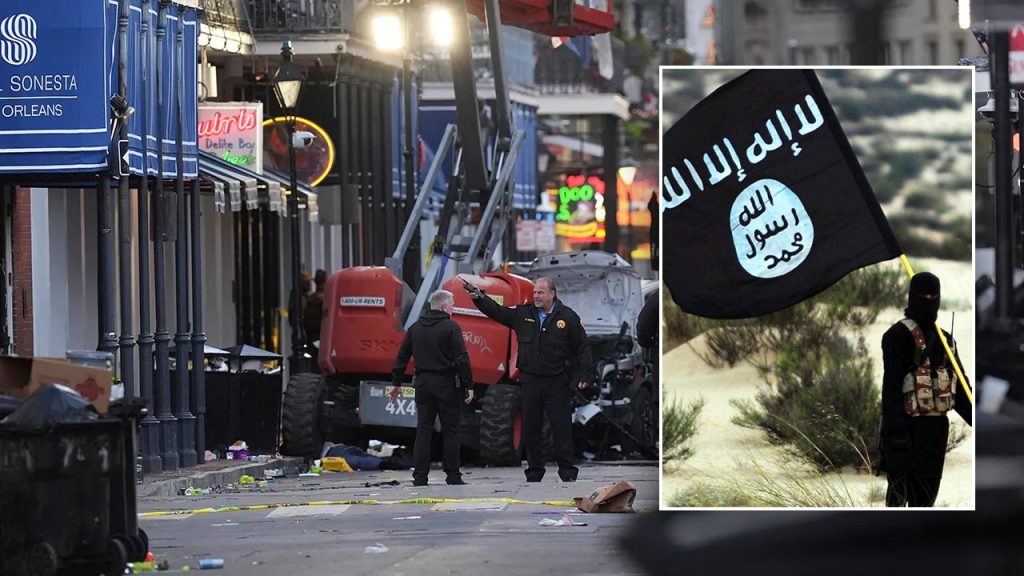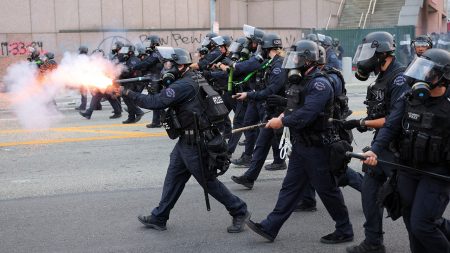The New Year’s Day terror attack in New Orleans, tragically claiming 14 lives, has brought the persistent threat of ISIS back into sharp focus. Shamsud-Din Jabbar, a former Army veteran with a history of service in Afghanistan, is identified as the perpetrator. Investigators reveal a chilling premeditation, citing Jabbar’s public displays of allegiance to ISIS on social media platforms, including videos where he articulates his evolving intentions and expresses concern about media narratives shifting focus away from the ideological conflict he perceives. The attack itself, involving a pickup truck adorned with an ISIS flag and loaded with weapons, including a potential IED, underscores the lethal potential of individuals radicalized by extremist ideologies.
ISIS, an acronym for the Islamic State in Iraq and Syria, emerged as a splinter group from al-Qaeda, distinguished by its brutal tactics and the pursuit of a global caliphate governed by a stringent interpretation of Sharia law. The group’s history is marked by territorial gains in Iraq and Syria, culminating in the declaration of a caliphate in 2014. Despite the death of its leader, Abu Bakr al-Baghdadi, in 2019 and the subsequent loss of its physical stronghold, ISIS continues to operate clandestinely, inspiring and potentially directing attacks globally. The group’s ideology, disseminated through propaganda and online platforms, resonates with individuals susceptible to radicalization, leading to “lone wolf” attacks that blur the lines between isolated criminal acts and acts of terrorism.
The decentralized nature of ISIS in recent years has arguably amplified its reach, transforming it into a potent brand that inspires both organized groups and individuals to carry out attacks, even without direct operational involvement from the core organization. This decentralized structure makes tracking and preventing attacks more challenging, as individuals may self-radicalize and act independently, without direct communication or logistical support from established ISIS networks. The group’s enduring appeal lies in its narrative of religious extremism and its purported military successes, attracting allegiance from various extremist organizations across continents.
The New Orleans attack joins a grim list of ISIS-inspired incidents on U.S. soil. The 2016 Pulse Nightclub massacre in Orlando, Florida, remains the deadliest terror-related mass shooting in U.S. history, claiming 49 lives. Omar Mateen, the perpetrator, pledged allegiance to ISIS before carrying out the attack. The 2015 San Bernardino shooting, where a married couple killed 14 people at a holiday party, also bears the hallmarks of ISIS inspiration, with reports indicating the wife’s online pledge of allegiance to the group during the attack.
The 2017 New York City bike path attack, where Sayfullo Saipov drove a truck into cyclists and runners, killing eight, further exemplifies the devastating consequences of ISIS-inspired terrorism. Saipov’s truck contained ISIS paraphernalia, solidifying the connection to the group’s ideology. The attack was labeled the worst terrorist incident in New York City since 9/11, highlighting the enduring vulnerability of urban spaces to such acts of violence.
Other incidents, such as the 2016 Ohio State University attack and the 2017 New York City subway bombing, demonstrate the varied nature of ISIS-inspired attacks. While the Ohio State attack involved a vehicle ramming followed by stabbings, the subway bombing involved a partially detonated pipe bomb. Both incidents, though resulting in fewer fatalities than the aforementioned attacks, underscore the potential for widespread fear and disruption caused by even attempted acts of terrorism. These attacks, often carried out by individuals radicalized through online propaganda, present a significant challenge to law enforcement and intelligence agencies tasked with preventing such violence. The common thread linking these disparate attacks is the influence of ISIS ideology, highlighting the group’s enduring power to incite violence even without direct operational involvement.










